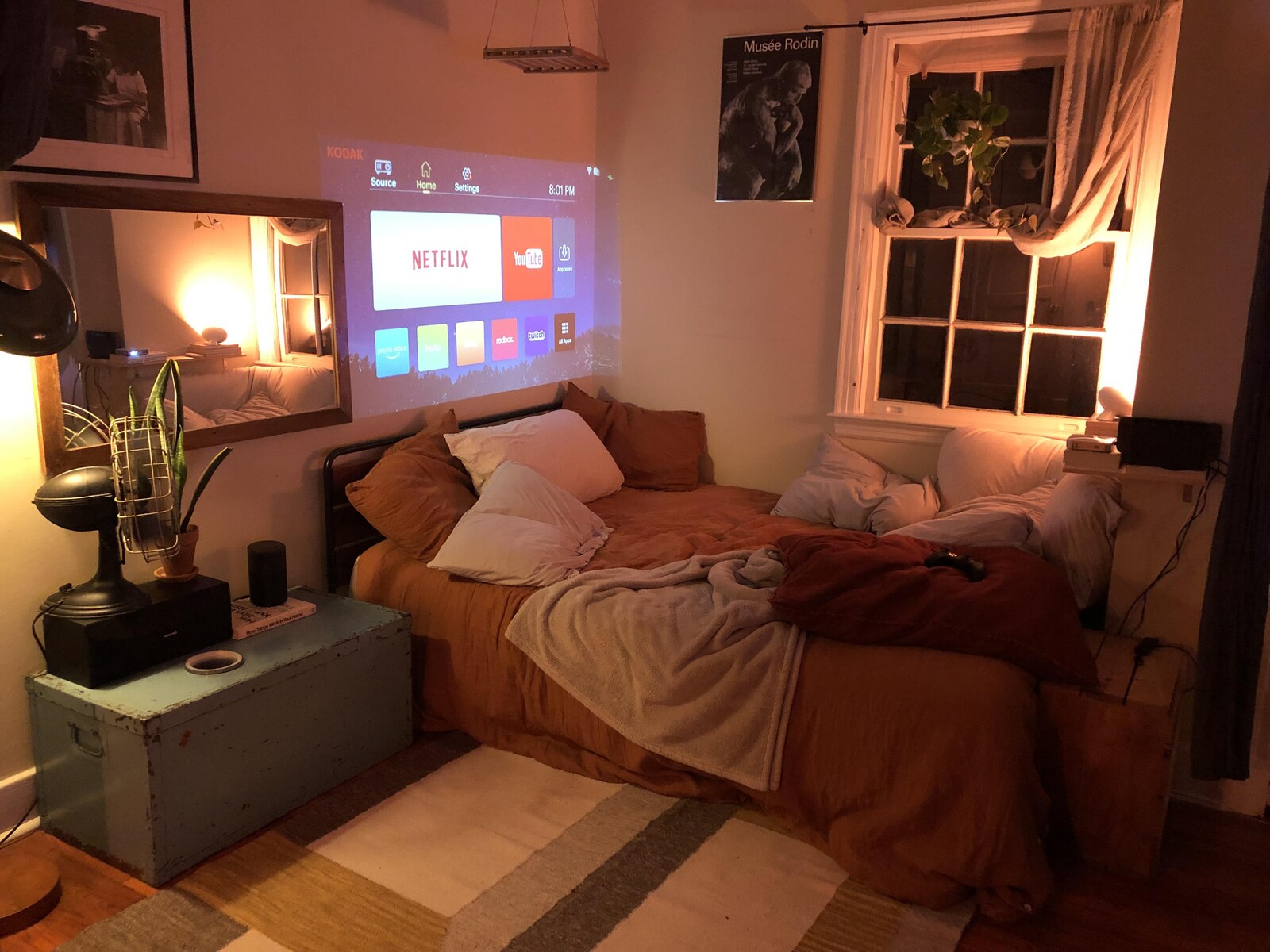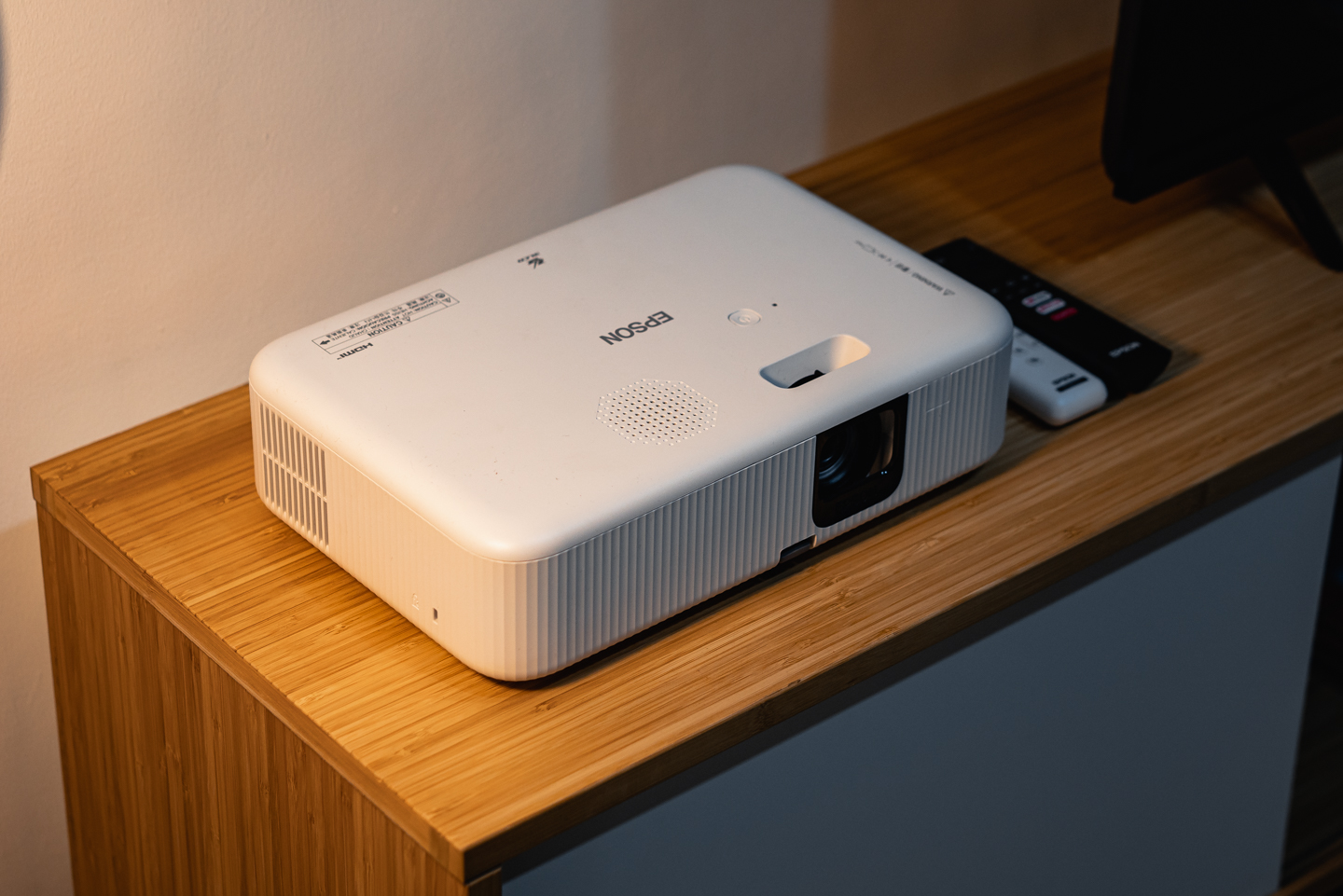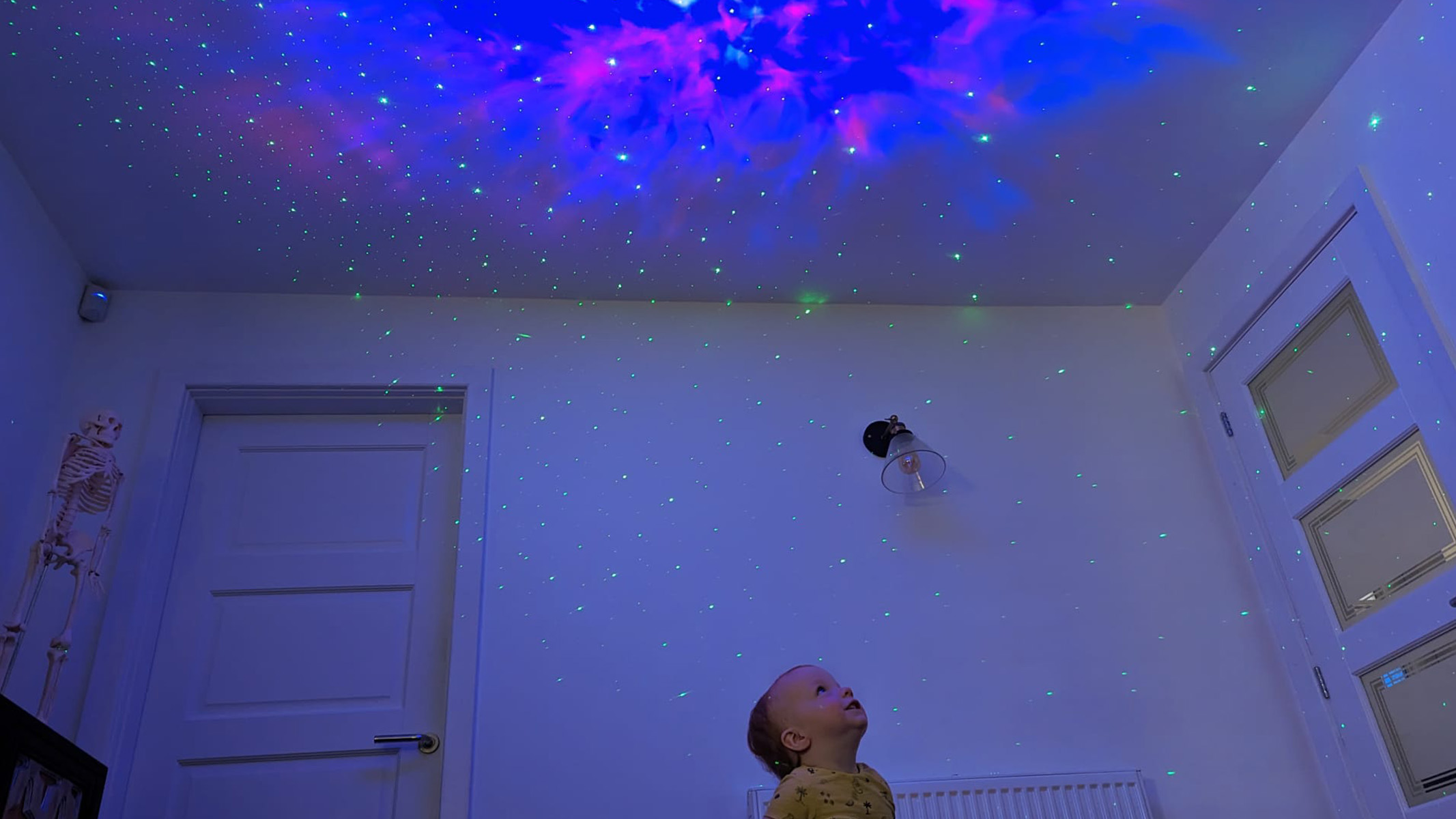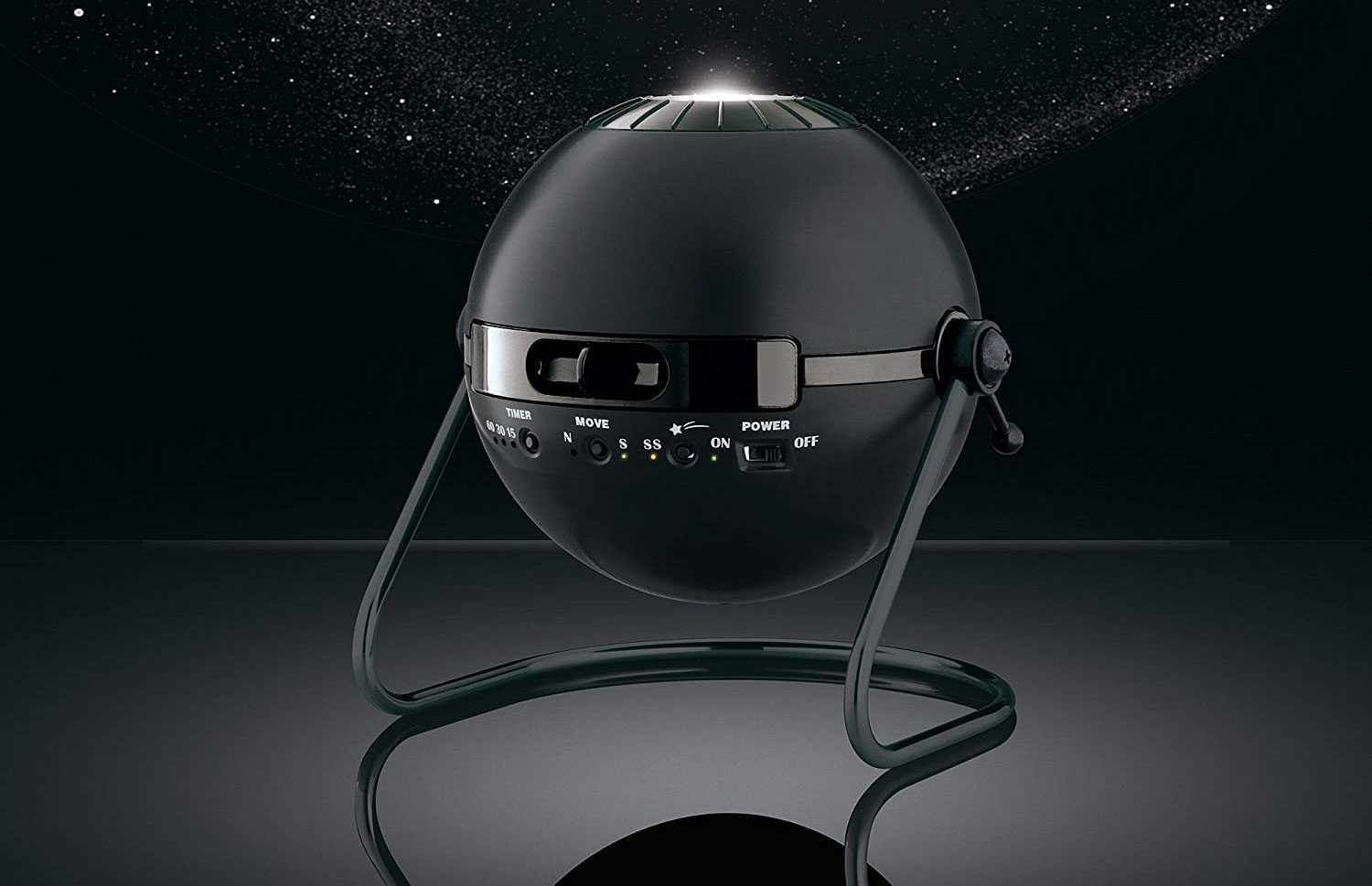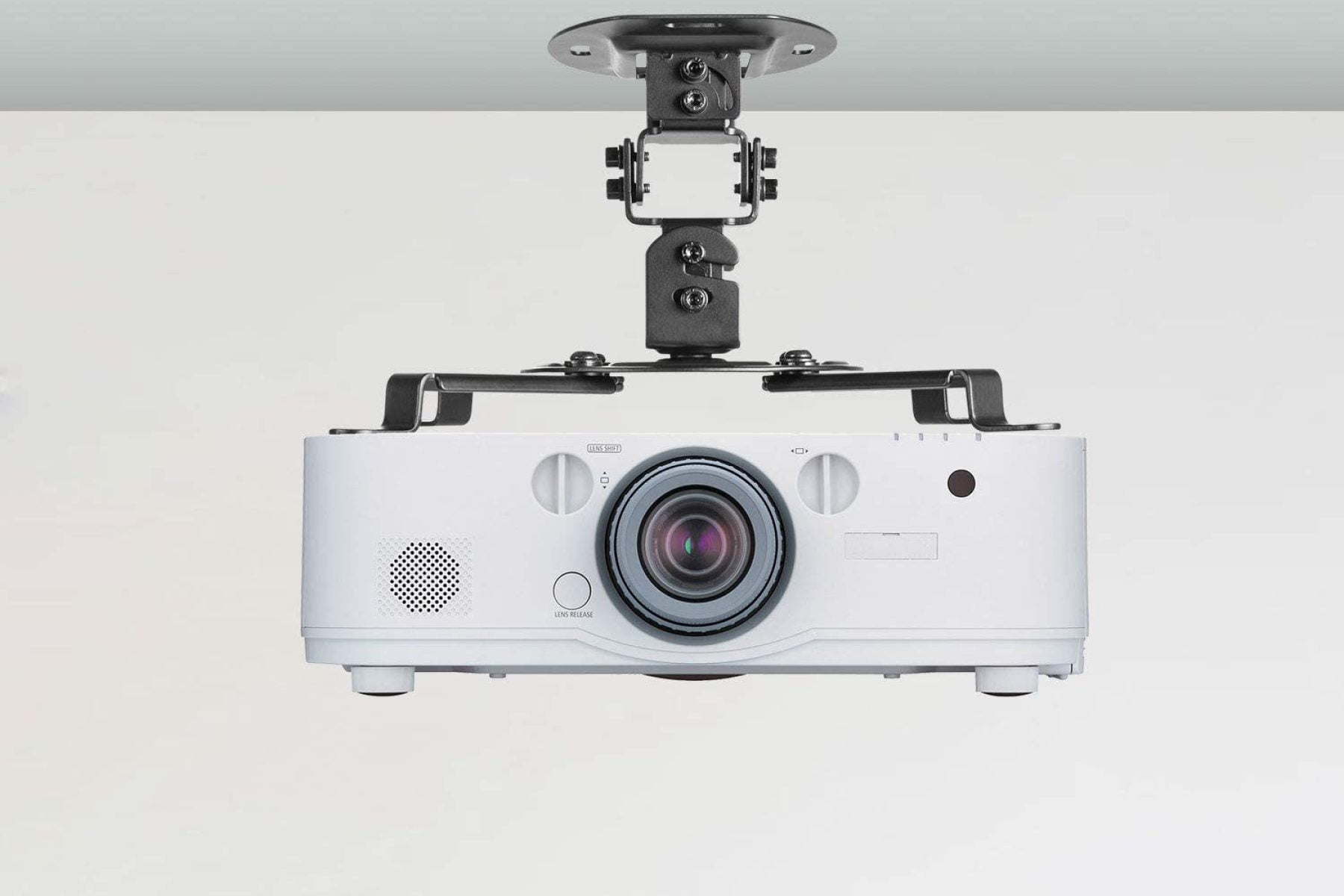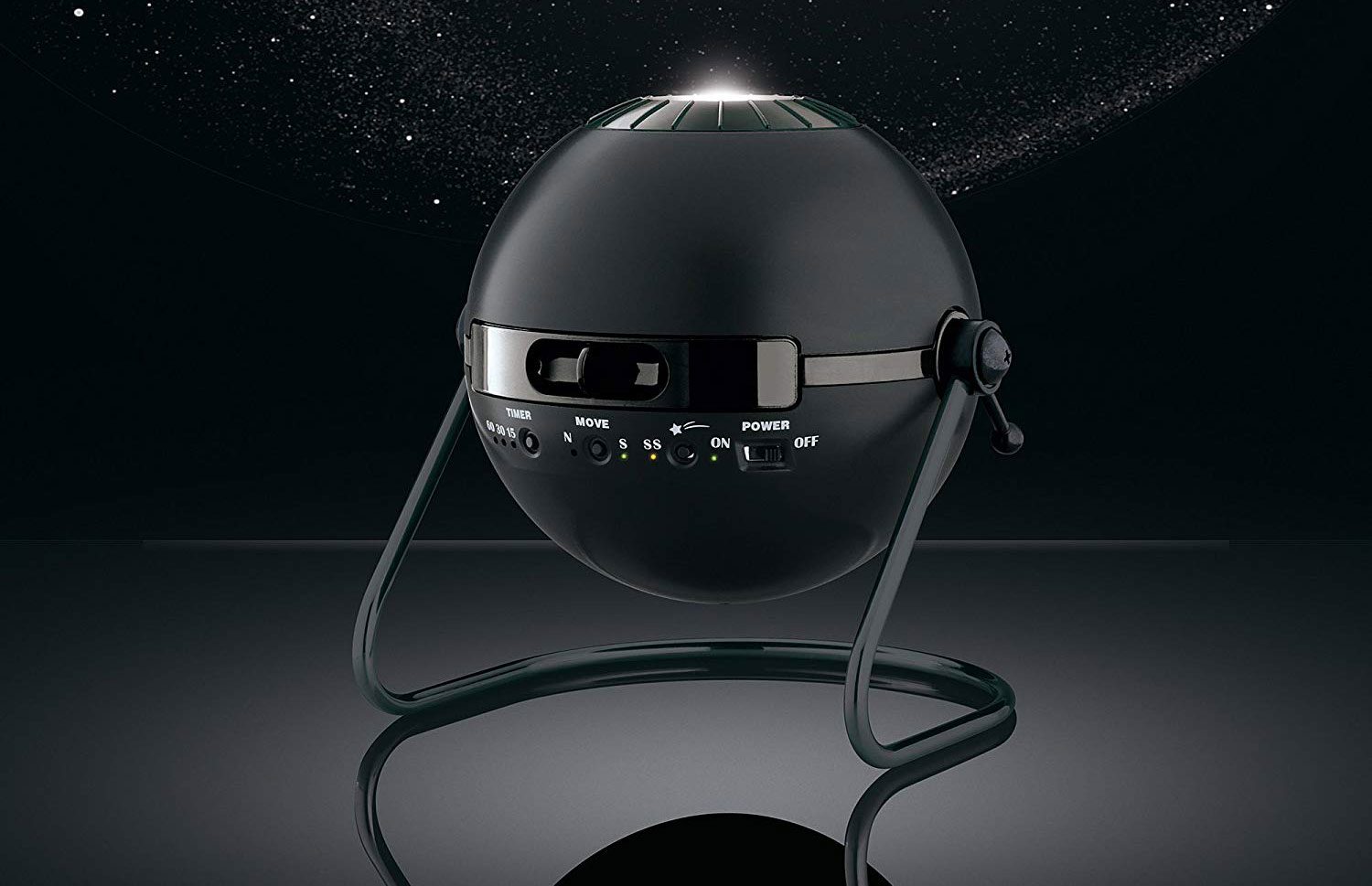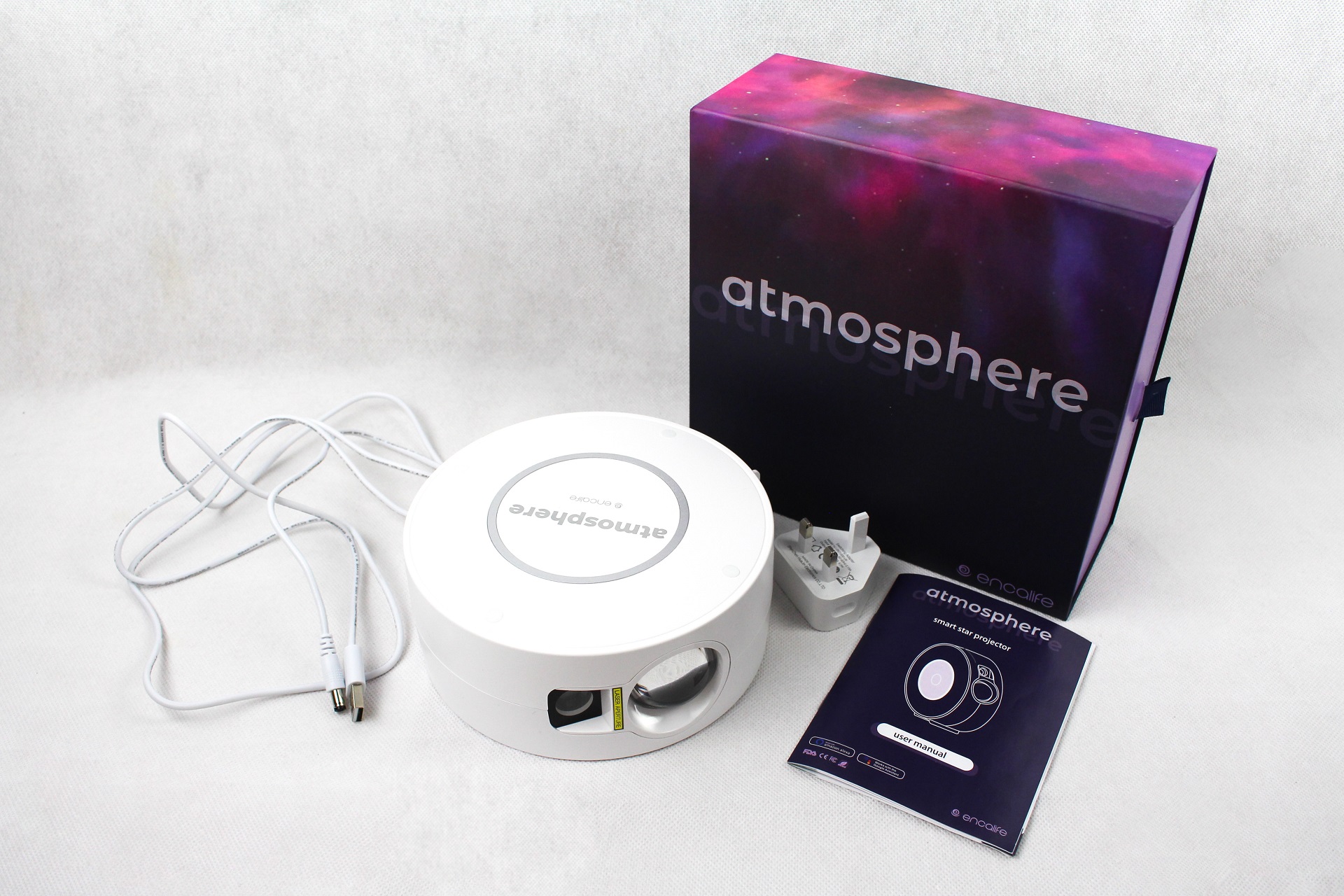Introduction
Setting up a projector in your bedroom can transform your space into a personal home theater, allowing you to enjoy movies, video games, or even project work on a larger screen. Whether you’re a movie enthusiast or someone who frequently hosts movie nights with friends, having a projector in your bedroom can take your entertainment experience to the next level.
But, getting started with setting up a projector can be a bit overwhelming if you’re new to it. There are several factors to consider, such as choosing the right projector, determining the ideal placement, and adjusting the settings for optimal image quality. However, with a little guidance, you’ll be well on your way to creating a captivating cinematic experience in the comfort of your own bedroom.
In this guide, we will walk you through the step-by-step process of setting up a projector in your bedroom. From choosing the right projector to connecting the cables and fine-tuning the image quality, we’ll cover all the essential aspects of getting your projector up and running.
Before we dive into the technical details, it’s important to note that the instructions provided here are meant for educational purposes and can vary depending on the specific model of your projector. Always refer to the manufacturer’s instructions and user manual for accurate and model-specific information.
So, if you’re ready to turn your bedroom into a mini home theater, let’s get started on setting up your projector for an immersive and cinematic experience right at home.
Choosing the Right Projector
The first step in setting up a projector in your bedroom is choosing the right one. There are several factors to consider when selecting a projector that suits your needs and budget.
1. Lumens: Lumens determine the brightness of the projector. For a bedroom setting, a projector with around 1500 to 2500 lumens should suffice, as bedrooms are typically dimly lit. However, if you have a dedicated dark space for your projector, you can opt for a lower lumen count.
2. Resolution: The resolution determines the clarity and sharpness of the projected image. For a bedroom setup, a projector with a minimum resolution of 1080p is recommended for a high-definition viewing experience. If you have a larger screen or prefer even higher quality, consider a 4K projector.
3. Throw Distance: The throw distance refers to the distance between the projector and the screen. Measure the available space in your bedroom to ensure that the projector you choose has a suitable throw distance range. This will help you position the projector at an optimal distance from the screen.
4. Connectivity: Check the connectivity options of the projector to ensure it can be easily connected to your preferred devices, such as laptops, gaming consoles, or streaming devices. Look for HDMI, USB, and VGA ports for versatile connectivity options.
5. Noise Level: Consider the noise level of the projector, especially if you plan to use it in a bedroom setting. Look for projectors with quiet operation to minimize distractions during your viewing experience.
6. Budget: Set a budget for your projector purchase and try to find a balance between desired features and affordability. There are a variety of projectors available at different price points, so research and compare options to find the best value for your money.
Taking these factors into account will help you narrow down your choices and find a projector that meets your specific requirements. Remember to read customer reviews and seek recommendations to ensure you make an informed decision.
Once you have chosen the right projector, you can move on to the next steps of setting it up in your bedroom.
Determining the Ideal Placement
Determining the ideal placement for your projector is essential to achieve optimal image quality and ensure a comfortable viewing experience in your bedroom. Here are some key factors to consider when deciding where to position your projector:
1. Distance from Screen: Measure the distance between the projector and the projection surface or screen. This distance is determined by the throw ratio of your projector. Make sure you refer to the manufacturer’s specifications or user manual for the recommended throw distance range.
2. Projection Angle: Consider the projection angle and ensure that the projector is positioned at a height and angle that provides a level and centered projection on the screen. You may need to use a projector mount or adjust the angle by placing the projector on a stable surface.
3. Screen Size: Determine the desired screen size for your bedroom setup. Consider the dimensions of your room and the seating arrangement to ensure that the screen size is appropriate for comfortable viewing.
4. Keystone Correction: Pay attention to the keystone correction feature of your projector. Keystone correction allows you to adjust the image to correct any distortion caused by an angled projection. This feature can be useful if you are unable to position the projector directly in front of the screen.
5. Obstructions: Take note of any obstructions in your bedroom, such as furniture, lamps, or windows. Ensure that the projector’s path is clear and no objects obstruct the projection or interfere with the viewing experience.
6. Cable Length: Consider the length of the cables that will connect your projector to the audio source and media devices. Ensure that the projector is placed within a reasonable distance from the power outlet and that the cables are long enough to reach the required connections.
By taking these factors into account, you can determine the ideal placement for your projector in your bedroom. Remember to adjust the position as needed, ensuring that the projected image is clear, centered, and free from distortion. Once the placement is finalized, you can move on to setting up the projector screen.
Setting Up the Projector Screen
Setting up the projector screen properly is crucial for achieving a high-quality and immersive viewing experience in your bedroom. Follow these steps to set up the screen:
1. Choose the Right Screen: Select a projection screen that fits your budget and meets your desired specifications. There are various types of screens available, such as fixed-frame screens, pull-down screens, and portable screens. Consider factors like screen size, material, and ease of installation when making your choice.
2. Measure and Position the Screen: Decide on the location for the screen in your bedroom. Measure the desired height and width for the screen and mark the positions accordingly. Use a level to ensure that the screen is straight and aligned correctly.
3. Install the Screen (For Fixed-Frame Screens): If you have chosen a fixed-frame screen, follow the manufacturer’s instructions to assemble and mount it securely on the wall or ceiling. Ensure that the screen is taut and free from wrinkles for optimal projection.
4. Position the Screen (For Pull-Down or Portable Screens): If you have a pull-down or portable screen, set it up in the designated location. Make sure the screen is stable and at the desired height. If necessary, adjust the tension of the screen to ensure a smooth and flat surface for projection.
5. Test the Screen: Before proceeding with the projector setup, test the screen by projecting an image onto it. Check for any issues like wrinkles, creases, or uneven projection surface. If needed, make adjustments or reposition the screen for optimal performance.
Properly setting up the projector screen is essential to achieve excellent image quality and maximize your viewing experience. Take the time to carefully measure, position, and install the screen to ensure a seamless and immersive cinematic experience in your bedroom.
Now that the projector screen is ready, the next step is to connect the necessary cables and get the projector up and running.
Connecting the Cables
Once you have set up the projector screen, it’s time to connect the necessary cables to get your projector up and running in your bedroom. Follow these steps to connect the cables:
1. Power Cable: Start by connecting the power cable to the projector and plugging it into a power outlet. Ensure that the power cable is securely connected at both ends.
2. Video Source Connection: Determine the video source you will be using, such as a laptop, gaming console, or media player. Connect the appropriate video cable, such as HDMI or VGA, from the video source to the corresponding input on the projector. Make sure the connections are secure.
3. Audio Connection: If you want to enhance your audio experience, connect an audio cable from the video source to an external sound system or speakers. This step is optional but highly recommended for better sound quality.
4. Other Connections: Depending on your specific setup, you may need to connect additional cables, such as USB for controlling the projector or Ethernet for network connection. Refer to the projector’s user manual for any additional connectivity options or requirements.
5. Cable Management: Once all the necessary cables are connected, take some time to organize and manage the cables to avoid tangling or tripping hazards. Velcro ties, cable clips, or cable covers can help keep the cables neat and tidy.
6. Power On: Now that all the cables are connected, power on the projector and the video source device. Use the projector’s remote control or the control panel to turn it on and select the correct input source.
By following these steps, you can ensure that all the necessary cables are properly connected for a seamless and reliable projector setup in your bedroom. Take the time to double-check the connections before proceeding to the next step of adjusting the projector settings.
It’s now time to fine-tune the image quality to ensure a crystal-clear projection and an immersive viewing experience.
Adjusting the Projector Settings
After connecting the cables and powering on the projector, it’s important to adjust the settings to ensure optimal image quality for your bedroom setup. Here’s a step-by-step guide to help you adjust the projector settings:
1. Keystone Correction: Start by adjusting the keystone correction settings if your projector has this feature. Keystone correction helps to correct any distortion caused by an angled projection. Use the projector’s remote control or menu options to adjust the keystone until the image appears straight and properly proportioned.
2. Focus and Zoom: Next, adjust the focus and zoom settings to get a sharp and clear image. Use the focus ring on the projector lens to adjust the focus until the text or image appears sharp. If your projector has a zoom lens, adjust the zoom to get the desired image size on the screen.
3. Aspect Ratio: Check the aspect ratio settings of your projector and make sure it matches the aspect ratio of your video source. Most projectors have options for 4:3 (standard) and 16:9 (widescreen) aspect ratios. Choose the appropriate setting to avoid any stretching or cropping of the image.
4. Color and Contrast: Use the projector’s menu options to adjust the color and contrast settings according to your preference. Experiment with the settings until you achieve a vibrant yet natural color reproduction and a good balance between bright and dark areas in the image.
5. Image Orientation: If you have mounted the projector on the ceiling or at an unconventional angle, adjust the image orientation settings to ensure that the image is projected correctly onto the screen. Use the projector’s remote control or menu options to rotate or flip the image as needed.
6. Test the Image: Once you have adjusted the settings, project a test image or video onto the screen. Check for any visual abnormalities, such as blurry edges, color distortion, or uneven brightness. Make further adjustments as necessary until you are satisfied with the image quality.
Taking the time to adjust these settings will help you achieve the best possible image quality for your bedroom projector setup. Fine-tuning the settings ensures that you enjoy a crisp, vibrant, and immersive viewing experience right in the comfort of your own bedroom.
Now that the projector settings are adjusted, let’s move on to the optional step of mounting the projector for a more permanent and neat installation.
Fine-tuning the Image Quality
Once you have adjusted the basic settings of your projector, it’s time to fine-tune the image quality to ensure a visually satisfying experience in your bedroom. Here are some tips for fine-tuning the image quality:
1. Brightness and Contrast: Adjust the brightness and contrast settings to optimize the image quality. Increase the brightness if the image appears too dark, and adjust the contrast to enhance the differentiation between light and dark areas.
2. Color Calibration: Use color calibration tools, such as the projector’s built-in color settings or external calibration devices, to achieve accurate and natural color representation. Adjust the color temperature, saturation, and individual color levels to achieve the desired color balance.
3. Sharpness and Clarity: Fine-tune the sharpness and clarity settings to enhance the detail and crispness of the projected image. Be cautious not to over-sharpen, as this can create an unnatural or pixelated appearance. Find the right balance that provides clear details without sacrificing overall image quality.
4. Noise Reduction: If your projector has a noise reduction feature, enable it to minimize any visual noise or artifacts in the image. This can improve the overall clarity and smoothness of the projection, especially when watching fast-paced action scenes or detailed images.
5. Motion Smoothness: Some projectors offer motion smoothing or frame interpolation features to reduce motion blur and enhance the smoothness of fast-moving scenes. Experiment with these settings to find the level that suits your personal preference.
6. Test and Adjust: After making adjustments, test the image quality with various types of content, such as movies, TV shows, or games. Pay attention to details, colors, and overall image quality. Make further fine-tuning adjustments if necessary until you are satisfied with the projection.
By fine-tuning the image quality, you can elevate your viewing experience in your bedroom and ensure that the projected image meets your visual expectations. Each projector and viewing environment can have unique characteristics, so take the time to experiment and personalize the settings to your liking.
With the image quality fine-tuned to perfection, you are now ready to enjoy the immersive and cinematic experience that your bedroom projector setup provides.
However, if you prefer a more permanent and organized installation, you may consider mounting the projector on the ceiling. Let’s explore this optional step in the next section.
Mounting the Projector (optional)
Mounting the projector on the ceiling is an optional step that can provide a more permanent and streamlined installation in your bedroom. Here’s a guide to help you with the process:
1. Determine the Mounting Location: Choose a suitable location on the ceiling for mounting the projector. Consider factors such as the height, distance from the screen, and accessibility for adjusting the projector if needed.
2. Mounting Bracket and Hardware: Purchase a compatible mounting bracket for your projector model. Ensure that the bracket is sturdy and can securely support the weight of the projector. Consult the manufacturer’s instructions or user manual for specific recommendations on mounting hardware.
3. Locate Ceiling Studs: Use a stud finder to locate the ceiling studs in the desired mounting location. Mounting the projector directly into the studs will provide the necessary support. Mark the locations of the studs for reference.
4. Install the Mounting Bracket: Use the appropriate hardware and tools to install the mounting bracket onto the ceiling, aligning it with the marked stud locations. Make sure the bracket is securely fastened to ensure stability.
5. Projector Attachment: Attach the projector to the mounting bracket according to the instructions provided with the bracket. Use the necessary screws or adapters to securely connect the projector to the bracket. Ensure that the projector is level and aligned correctly with the screen.
6. Cable Management: After mounting the projector, plan and organize the cables to maintain a clean and clutter-free installation. Use cable management solutions such as cable ties, conduits, or adhesive clips to route and secure the cables along the ceiling and walls.
7. Test the Projection: Before finalizing the installation, test the projection to ensure that the image is properly aligned and centered on the screen. Make any necessary adjustments to the projector’s position or angle to achieve an optimal projection.
Remember to refer to the manufacturer’s instructions and recommended guidelines when mounting your projector. If you are uncertain or uncomfortable with the installation process, consider seeking professional assistance to ensure safety and proper setup.
With the projector mounted on the ceiling, you can now enjoy a more seamless and organized setup in your bedroom. It allows for better utilization of space and removes the need for a dedicated surface or stand for the projector.
In the next section, we will cover the final step – testing the projection to ensure everything is working as expected.
Testing the Projection
After completing the setup and adjustments, it’s time to test the projection and ensure that everything is working seamlessly in your bedroom. Follow these steps to conduct a thorough projection test:
1. Power On: Turn on the projector and any connected video source device, such as a laptop or gaming console.
2. Source Selection: Use the projector’s remote control or control panel to select the correct input source that corresponds to the connected video source device.
3. Projection Test Image: Many projectors offer built-in test patterns or test images. If available, use these to check the projection quality and make further adjustments if needed. Look for clarity, color accuracy, and overall image quality.
4. Playback Test Content: Play different types of content, such as movies, TV shows, or games, using your connected video source device. Pay attention to details, colors, motion smoothness, and overall image quality. Ensure that the projected image is sharp, vibrant, and free from any distortions.
5. Audio Test: If you have connected external speakers or a sound system, test the audio to ensure that the sound is clear and synchronized with the projected video. Adjust the volume as needed.
6. Viewing Experience: Sit in various positions within your bedroom and test the viewing experience from different angles, distances, and seating positions. Ensure that the image is visible and enjoyable from all desired viewing locations.
7. Calibration and Adjustment: If you notice any issues or imperfections during the test, make necessary calibration adjustments to improve the image quality. Continue fine-tuning settings as required until you achieve the desired projection experience.
8. Final Check: Review all aspects of the projection setup, including cable connections, image quality, audio synchronization, and overall performance. Verify that the projected image meets your expectations and that there are no visible issues.
By conducting a comprehensive projection test, you can ensure that your bedroom setup is optimized for the best possible viewing experience. Make any final adjustments or improvements as needed to achieve the desired results.
Now that you have completed the testing phase, you are ready to fully enjoy your newly set-up projector in your bedroom. Grab some popcorn, dim the lights, and immerse yourself in a cinematic experience from the comfort of your own bedroom!
Conclusion
Congratulations! You have successfully set up a projector in your bedroom and created your own personal home theater. By following the steps outlined in this guide, you have learned how to choose the right projector, determine the ideal placement, set up the projector screen, connect the necessary cables, adjust the projector settings, fine-tune the image quality, and even mount the projector if desired.
Now, you can enjoy immersive movie nights, intense gaming sessions, or even project work with a larger-than-life display right in the comfort of your own bedroom. Whether you are a movie enthusiast seeking a cinematic experience or someone who wants a versatile screen for different multimedia activities, your bedroom projector setup provides endless entertainment possibilities.
Remember, each projector model may have specific features and instructions, so always consult the manufacturer’s guidelines and user manual for accurate information.
With your projector up and running, don’t forget to regularly clean the projector lens and replace the lamp when necessary to maintain optimal performance.
So, sit back, relax, and enjoy the immersive visual experience that your bedroom projector setup brings. Create lasting memories with friends and family, and have fun exploring the vast world of entertainment that can now be enjoyed in the cozy confines of your own bedroom.







